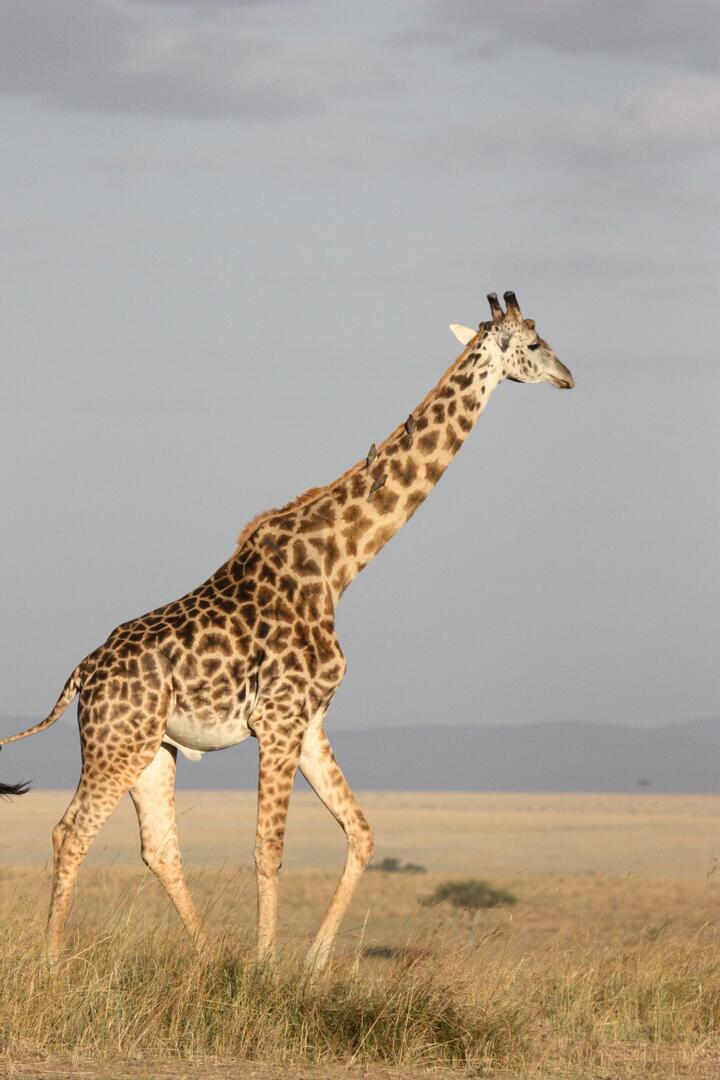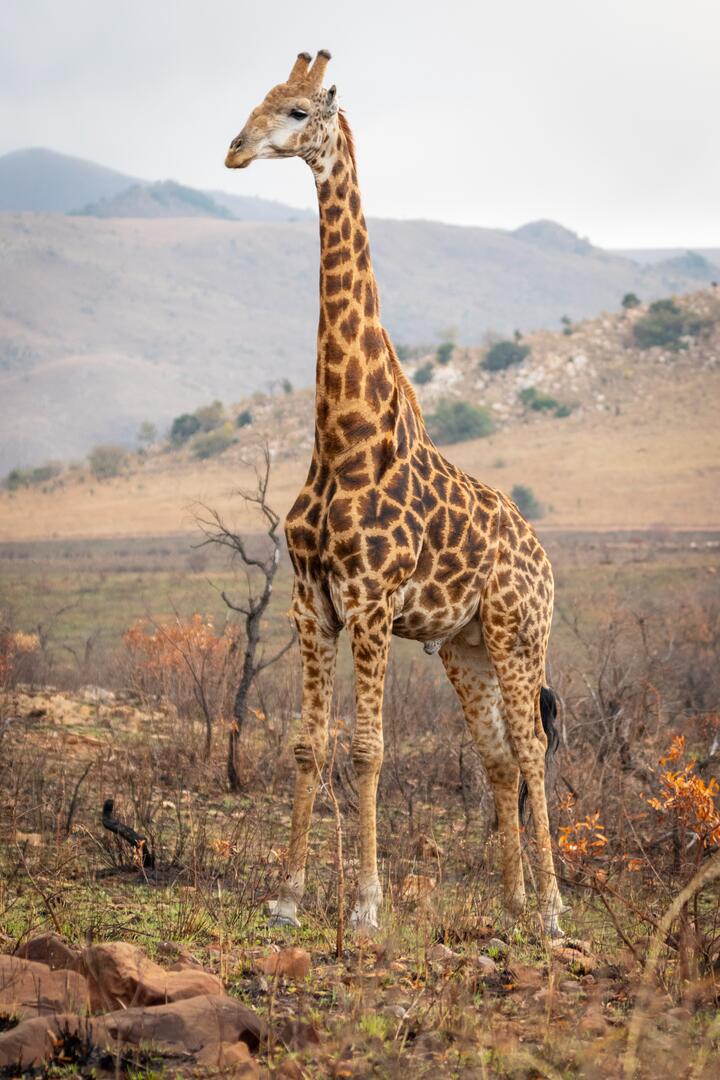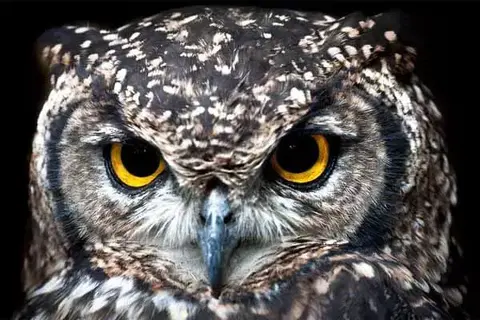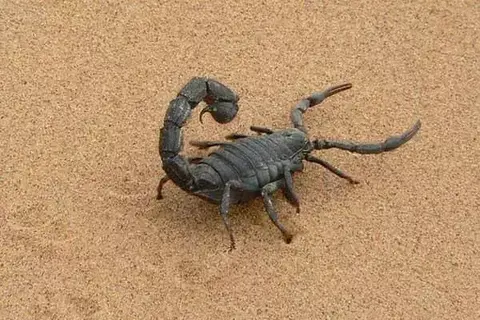How Much Does Baby Giraffe Weigh?
Karla MillerThe word “giraffe” comes from the Arabic zaraf (زرافة) and means “smart”.
 Photo by Pixabay on pexels
Photo by Pixabay on pexelsA giraffe can eat up to 35 kg of plants per day. Although it can eat many kinds of plants, its favorite treat is barbed acacia. Reaching for the leaves, the male can stretch his tongue up to 42 centimeters.
The first giraffe was brought to Europe by Guy Julius Caesar in 46 BC. In 1486, the Medici giraffe appeared in Florence at Lorenzo Medici. In New time the first brought giraffe was in 1827 an animal named Zarafa who gave his name to it.
Male giraffes reach a height of 5 meters, but there are reports of specimens up to 7 meters high. Reliably measured growth of the largest giraffe was 6 meters. This giraffe lived in the “Chester Zoo” Zoo in England.
Although the giraffe is born without horns, the place of its future appearance is marked by bundles of black hair, under which is cartilage. Gradually, the cartilage tissue becomes ossified, turning into small horns, which then begin to grow. The bundles of black wool remain in the giraffe for a few years, then they are washed and disappear.
The only relative of the giraffe is the okapi.
Their only real enemy (besides a man) is a lion.
A giraffe can run at a speed of about 55 km/h.
Giraffes have the biggest heart, it weighs 11 kilograms, has a length of 60 centimeters and walls 6 centimeters thick, and the highest blood pressure of all terrestrial animals.
Giraffes have a black tongue, which can be as long as 45 cm.
Among all mammals, giraffes have one of the lowest sleep requirements – from ten minutes to two hours a day; on average, giraffes sleep 1.9 hours a day. Giraffes sleep lying down, bending their necks, and putting their heads on the croup. The natural position of the sleeping giraffe has never been documented until the 1970s when the first photographs of the sleeping giraffe in nature received Bernhard Grzimek.
The newborn giraffe, which can stand on its feet about an hour after birth, is 1.5 meters tall and weighs about 100 kg.
The giraffe can do without water longer than a camel.
A giraffe can clean the ears with its tongue.
A giraffe neck has seven vertebrae – the same amount as the neck of a man and most other mammals.
Like the fingerprints, the color of a giraffe is also unique.
The giraffe is the highest living mammal in the world: its height from ground to forehead is 4.8-5.8 meters.
The marriage period usually lasts from July to September, and the pregnancy period is 14-15 months. As a rule, only one calf is born.
Immediately after birth, the giraffe is 1.8 m tall and weighs 50 kg.
An hour later the calf stands firmly on its feet and after a few hours starts running. However, in a herd of calves are allowed only after two or three weeks. For about a year and a half, the offspring stay with their mother.
The birth takes place in a standing position, so the first thing the newborn baby has to do is fall from a two-meter height.
Giraffes live alone or in small herds.
The terrain they walk around in search of food can be up to 100 km².
Special valves in the jugular vein prevent blood from flowing back to the heart, which would cause oxygen deprivation of the brain. These valves also protect the brain from excessive blood flow when the head is tilted down while drinking.
Among all mammals, giraffes have one of the lowest sleep requirements, from ten minutes to two hours a day; on average, giraffes sleep 1.9 hours a day.
It is widely believed that giraffes are voiceless animals. However, they communicate with each other at frequencies below 20 Hz that are not audible to human hearing.
Giraffes are exclusively herbivorous animals.
Today, giraffes can be found only in the south of Sahara, primarily in the steppes of Eastern and Southern Africa.
The giraffe’s mouth is surrounded by a stratum corneum of skin that protects it from the sharp acacia thorns it eats. The giraffe’s very thick saliva envelops the thorns, which makes it easier to swallow.
At four years of age, the giraffe reaches puberty, at six years of age, it reaches full height.
In the wild, life expectancy is about 25 years, in captivity about 35.
The blow of an adult giraffe is so strong that it can decapitate a lion. There is a known case when a lion during a jump missed and was met with a powerful blow of hooves to the chest. An observer (an employee of one of the national parks), seeing that the lion did not rise after the fall, came closer and, after waiting for more than an hour, shot the mangled beast. The chest of the lion was crushed and almost all its ribs were broken.
How Much Does a Baby Giraffe Weight?
 Photo Magda Ehlers on pexels
Photo Magda Ehlers on pexelsThe size and weight of a giraffe are often in question, and a good way to start answering this question is to compare it to the average human. Although they are not exactly small people, adult male giraffes are about 17 feet tall and weigh as much as 3,000 pounds. Their heart is more than 2 feet long and pumps 20 gallons of blood per minute. In addition to the size of the heart, a large giraffe will consume around 75 pounds of food a day, and it will also consume up to 10 gallons of water per day. Lastly, giraffes have long necks, and they can reach six and a half feet in length (including the three-foot tassel).
Besides being tall and heavy, giraffes also have prehensile tongues, which make them able to manipulate objects. Their tails are the longest of any mammal, ranging from thirty to forty inches long. A giraffe’s eyes are huge – the size of humans is about eighty-five centimeters! The ossicones are made of cartilage, and are covered in fur or skin. Their heart is two feet long and weighs more than two hundred and fifty pounds, and beats about 150 times a day.
A male giraffe can grow to be about 18 feet tall, and a female can grow to be approximately 14 feet tall. It is estimated that a giraffe’s neck is approximately six feet long, and the rest of the body is four to five feet tall. The average adult giraffe weighs between two and three thousand pounds. It is possible to calculate the weight of a GIRL, but this is difficult without accurate measurement.
To get a sense of how much a giraffe weighs, let’s consider its anatomy. The giraffe’s head is about six feet high, and it weighs 150 pounds. A male giraffe can grow up to three feet in height. Its neck can reach a maximum of 15 feet. The giraffe is the tallest of all animals, and its body is incredibly dense.
The giraffe’s neck is the longest part of its body. Its legs are about six feet long, and the female’s tail is about the same length. The ossicones are made of cartilage and are covered with skin or fur. Its heart is about 2 feet long and weighs 21.5 pounds. The occipital bones of a GIRL are the same size as that of a human.
The giraffe’s long, thick neck is an asset. Its tongue is about 20 inches long, and its ears can be up to two feet across. A giraffe’s head and neck are remarkably large, and the tassels and tail are the most important parts of the animal. They have the largest tassels and tongues of all the herbivores.
A giraffe’s tongue is long. It can reach 45 centimeters. The giraffe’s horns are about four to five centimeters high, and their heart can weigh up to 22 lbs. Its bones are about ten inches long and 25 centimeters long. When the animal is born, the tassel will weigh between 50 and 70 pounds.
A giraffe’s weight is a good indicator of how much food it eats. The giraffe’s diet consists primarily of the leaves and branches of the acacia tree. Its mother feeds her calf every day. The giraffe’s calves are considered the ‘gardeners’ of the savannah.
A giraffe’s heart is 25 pounds and pumps blood eight feet to the brain. The high pressure of the giraffe’s blood is so high that it could burst a limb. This is why a stuffed teddy bear can weigh as much as a human. Fortunately, a giraffe’s heart is relatively small compared to human babies.
The giraffe is one of the heaviest land animals in the world. Male giraffes can weigh up to 1,900 pounds, while female giraffes rarely reach half that weight. The giraffe’s length and weight are important characteristics for its survival, as well as its tail. They are the largest animals in Africa, and weigh as much as human babies!
- LivestockCan Chickens Swim?

- Cats25 Interesting Facts About CatsBy Amelia B

- Birds20 Interesting Facts About OwlsBy Camilo Walker

- DogsA Dog With A Very Expressive Muzzle Surprises The InternetBy Khai Dove

- BirdsFacts About Woodpeckers PeckingBy Amelia B

- DogsPuppy Health BasicsBy Karla Miller

- InsectsInteresting Facts About ScorpionsBy Nolan Foster

- Insects50 Interesting Facts About BumblebeesBy Karla Miller

- DogsDalmatian Dogs History, Origin And Features Of The BreedBy Lucas Torres

- DogsPreparing For Puppy: Must Have Tips For Your Puppy’S First WeekBy Camilo Walker
